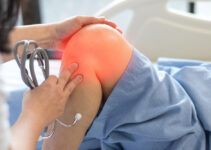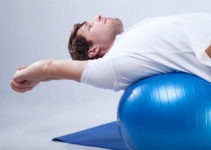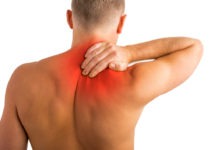Prognosis of LBP
It has an excellent prognosis if it is due to non-serious causes. According to the general population studies, it has been demonstrated that episodes of low back pain are of minor importance and unexceptionally causes disability. There is only a small number of the people who takes this problem seriously and seeks treatment for this.
Out of those persons who seek care, there will be a percentage of 62 percent of people who will still experience pain even after 6 months of counseling.
There will be some persons who will off from work, and their percentage is 16%. The prognosis for acute back pain is good. Approximately 75 to 90 percent of patients recover from pain and disability after getting treatment within weeks, and the persons who were at leave from work will quickly come back to work.
The prognosis for chronic back pain is moderate. Among most of the cases of chronic LBP, the odds of earlier recovery are extremely low.
Conclusion
This article has comprehensively provided all the datails, about causes, symptoms, types, classifications, prognosis, prevention, and treatment options of low back pain. Because as people know better about the current problem, they can get better treatment. Similarly, this article has provided ample evidence about its prevalence, burden, and incidence. To sum it all up, it can conclude that once you have understood all about the LBP Diseases, and if you follow prevention guidelines and physiotherapy treatment even at home, you can get rid of LBP early.
References and Resources
- Eron G.Manusov MD, September 2012, ‘Evaluation and Diagnosis of Low Back Pain’, science direct, 39(3), pp. 471-479
- Balagué F, Mannion AF, Pellisé F, Cedraschi C., 2012 Feb, ‘Non-specific low back pain’, 4;379(9814):482-91
- Luciola da C. Menezes Costa, PhD, Christopher G. Maher, PhD, Mark J. Hancock, PhD, James H. McAuley, PhD, Robert D. Herbert, PhD, and Leonardo O.P. Costa, PhD, 2012 Aug, ‘The prognosis of acute and persistent low-back pain: a meta-analysis’, 184(11): E613–E624.
- Koes BW, van Tulder M, Lin CW, Macedo LG, McAuley J, Maher C, 2010 Dec, ‘An updated overview of clinical guidelines for the management of non-specific low back pain in primary care’European Spine Journal. 19 (12): 2075–2094
- Vinod Malhotra; Yao, Fun-Sun F.; Fontes, Manuel da Costa (2011). Yao and Artusio’s Anesthesiology: Problem-Oriented Patient Management. Hagerstwon, MD: Lippincott Williams & Wilkins. pp. Chapter 49.
- “Low Back Pain Fact Sheet”. National Institute of Neurological Disorders and Stroke. 3 November 2015. Archived from the original on 4 March 2016.
- Hoy D, Bain C, Williams G, et al. (June 2012). “A systematic review of the global prevalence of low back pain”. Arthritis Rheum. 64 (6): 2028–37.
- “Low Back Pain Fact Sheet”. National Institute of Neurological Disorders and Stroke. National Institute of Health. Archived from the original on 19 July 2013. Redeemed 6 November 2019.
- “Fast Facts About Back Pain”. National Institute of Arthritis and Musculoskeletal and Skin Diseases. National Institute of Health. September 2009. Archived from the original on 5 June 2013. Redeemed 6 November 2019.
- Koes BW, van Tulder M, Lin C-WC, Macedo LG, McAuley J, Maher C. An updated overview of clinical guidelines for the management of non-specific low back pain in primary care. Eur Spine J 2010;19:2075–94.
- Henschke N, Maher CG, Refshauge KM, et al. Prevalence of and screening for serious spinal pathology in patients presenting to primary care settings with acute low back pain. Arthritis Rheum 2009;60:3072–80.
- van Tulder M, Becker A, Bekkering T, et al. Chapter 3. European guidelines for the management of acute nonspecific low back pain in primary care. Eur Spine J 2006;15(Suppl 2):S169–91.
- Koes BW, van Tulder MW, Thomas S. Diagnosis and treatment of low back pain. BMJ 2006;332:1430–34.
- Manusov EG (September 2012). “Evaluation and diagnosis of low back pain“. Prim. Care. 39 (3): 471–9
- Cohen SP, Argoff CE, Carragee EJ 2008. “Management of low back pain“. BMJ. 337: a2718
- Manusov EG (September 2012). “Evaluation and diagnosis of low back pain“. Prim. Care. 39 (3): 471–9
- “Use of imaging studies for low back pain: percentage of members with a primary diagnosis of low back pain who did not have an imaging study (plain x-ray, MRI, CT scan) within 28 days of the diagnosis“. —. 2013. Archived from the original on 4 October 2013. Retrieved 11 June 2013.
- Manchikanti L, Glaser SE, Wolfer L, Derby R, Cohen SP (2009). “Systematic review of lumbar discography as a diagnostic test for chronic low back pain“. Pain Physician. 12 (3): 541–59. PMID 19461822. Archived from the original on 5 October 2013.
- Crownover BK, Bepko JL (April 2013). “Appropriate and safe use of diagnostic imaging“. Am Fam Physician. 87 (7): 494–501.
- American Academy of Family Physicians, “Ten Things Physicians and Patients Should Question”, Choosing Wisely: an initiative of the ABIM Foundation, American Academy of Family Physicians, archived from the original on 10 February 2013, retrieved 5 September 2012
- Shi Z1, Zhou H, Lu L, Pan B, Wei Z, Yao X, Kang Y, Liu L, Feng S. , ‘Aquatic Exercises in the Treatment of Low Back Pain: A Systematic Review of the Literature and Meta-Analysis of Eight Studies’, American Journal of Physical Medicine and Rehabilitation, 2018 Feb;97(2):116-122.
- Casazza, BA (15 February 2012). “Diagnosis and treatment of acute low back pain“. American Family Physician. 85 (4): 343–50.
- Steffens, Daniel; Maher, Chris G.; Pereira, Leani S. M.; Stevens, Matthew L; Oliveira, Vinicius C.; Chapple, Meredith; Teixeira-Salmela, Luci F.; Hancock, Mark J. (11 January 2016). “Prevention of Low Back Pain“. JAMA Internal Medicine. 176 (2): 199–208.
- Choi BK, Verbeek JH, Tam WW, Jiang JY (2010). Choi BK (ed.). “Exercises for prevention of recurrences of low-back pain”. Cochrane Database of Systematic Reviews (1): CD006555.
- Chou R, Qaseem A, Snow V, et al. (October 2007). “Diagnosis and treatment of low back pain: a joint clinical practice guideline from the American College of Physicians and the American Pain Society”. Annals of Internal Medicine. 147 (7): 478–91.
- Guild DG (September 2012). “Mechanical therapy for low back pain“. Prim. Care. 39 (3): 511–6.
- Sahar T, Cohen MJ, Uval-Ne’eman V, et al. (April 2009). “Insoles for prevention and treatment of back pain: a systematic review within the framework of the Cochrane Collaboration Back Review Group“. Spine. 34 (9): 924–33.
- Steffens D, Maher C, Pereira L, Stevens M, Oliveira V, Chapple M, et al. Prevention of Low Back Pain: A Systematic Review and Meta-analysis. JAMA internal medicine. 2016; 176:1-10.
- https://www.aurorahealthcare.org/patients-visitors/blog/10-lifestyle-changes-help-prevent-lower-back-pain
- NHS Choices, UK (Back pain), NPS MedicineWise (Managing low back pain in primary care), Mayo Clinic (Proper lifting technique)
- Back pain. (2016). niams.nih.gov/health-topics/back-pain
- https://www.health.harvard.edu/pain/the-best-meds-for-back-pain.
- Kumar, T., Kumar, S., Nezamuddin, M., & Sharma, V. P. (2015). Efficacy of core muscle strengthening exercise in chronic low back pain patients. Journal of back and musculoskeletal rehabilitation, 28(4), 699-707.
- https://www.healthline.com/health/fitness-exercise/lower-back-exercises#partial-curls
- https://www.livestrong.com/article/106461-isometric-exercises-lower-back/
- Jauregui, J. J., Cherian, J. J., Gwam, C. U., Chughtai, M., Mistry, J. B., Elmallah, R. K., … & Mont, M. A. (2016). A meta-analysis of transcutaneous electrical nerve stimulation for chronic low back pain. Surg Technol Int, 28, 296-302.
- Block AR. Demoralization, Patient Activation, and the Outcome of Spine Surgery. Healthcare (Basel). 2016;4(1)
- Cassidy, cote P, carrol lj, kristman V.incidence, and course of little back pain episodes in the general population. spine (Phila Pa 1976)2005;30(24):2817-23)
- Vingard E, Mortimer M,wiktorin C, et al. Seeking care for low back pain the general population: a two-year follow-up study: results from the MUSIC-Norrtalje study (Phila Pa 1976) 2002:27(19)159-65.
- Hestbaek L,leboeuf-yde C,Mannichhe C low back pain: what is the long term course?
- Coste j, Lefrancois G, Cohen de kara A, Le Parc JM,Paolaggi jB. Clinical course and prognostic factors in acute low back pain: an inception cohort study in primary care practice.BMJ 1994:308(6928):577-80Coste j, Lefrancois G, Guillemin F,pouchot j, prognosis, and quality of life in patients with acute low back pain: insights from a comprehensive inception cohort study.Arthritis Rheum 2004:51(2):168_76.Klenerman l, Slade PD, Stanley IM, et al.the prediction of chronicity in patients with an acute attack of low back pain in general practice settings.Spine (Philla Pa 1976)1995:20(4):478-84
- Grotle M, Brox Ji,veierod MB, et al. Clinical course and prognostic factors in acute low back pain: patients are consulting primary care for the first time.Spine (Phila Pa 1976) 2005:30(8):976-80
- Shaw Ws,pranksy G, Patterson W, winters T. early disability risk factors for low back pain assessed at outpatient occupational health clinics.spine (Phila Pa 1976) 2005:30(5):572-80
- Hence, 80 percent of people suffering from low back pain will continue to have pain. Von Koff M, Deyo RA, Cherkin D.Barlow W. Back pain in primary care. Outcomes in the first year.Spine (Phila Pa 1976):1993 18(7):855-62
- Kumar, T., Kumar, S., Nezamuddin, M., & Sharma, V. P. (2015). Efficacy of core muscle strengthening exercise in chronic low back pain patients. Journal of back and musculoskeletal rehabilitation, 28(4), 699-707. https://www.healthline.com/health/fitness-exercise/lower-back-exercises#partial-curls




